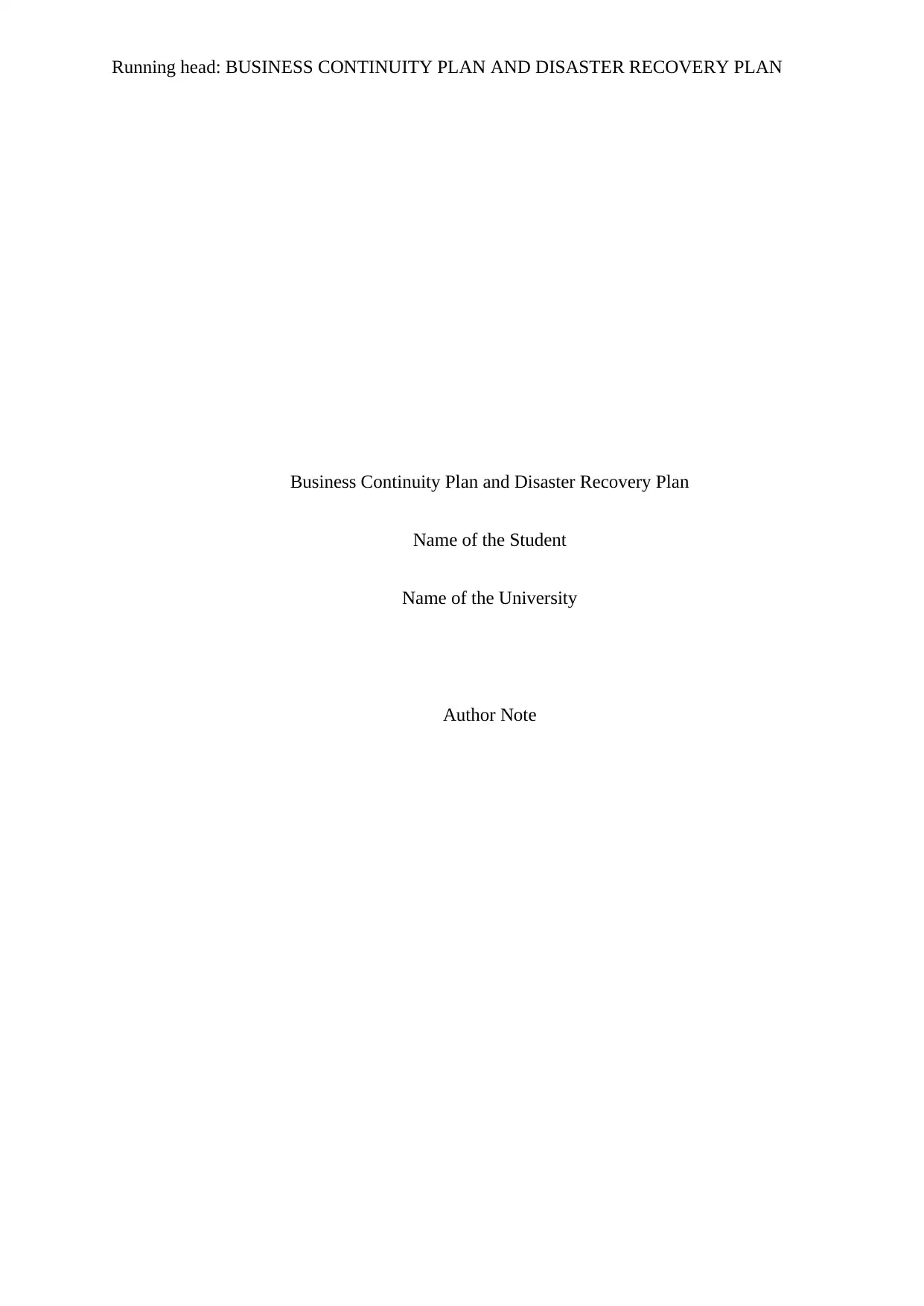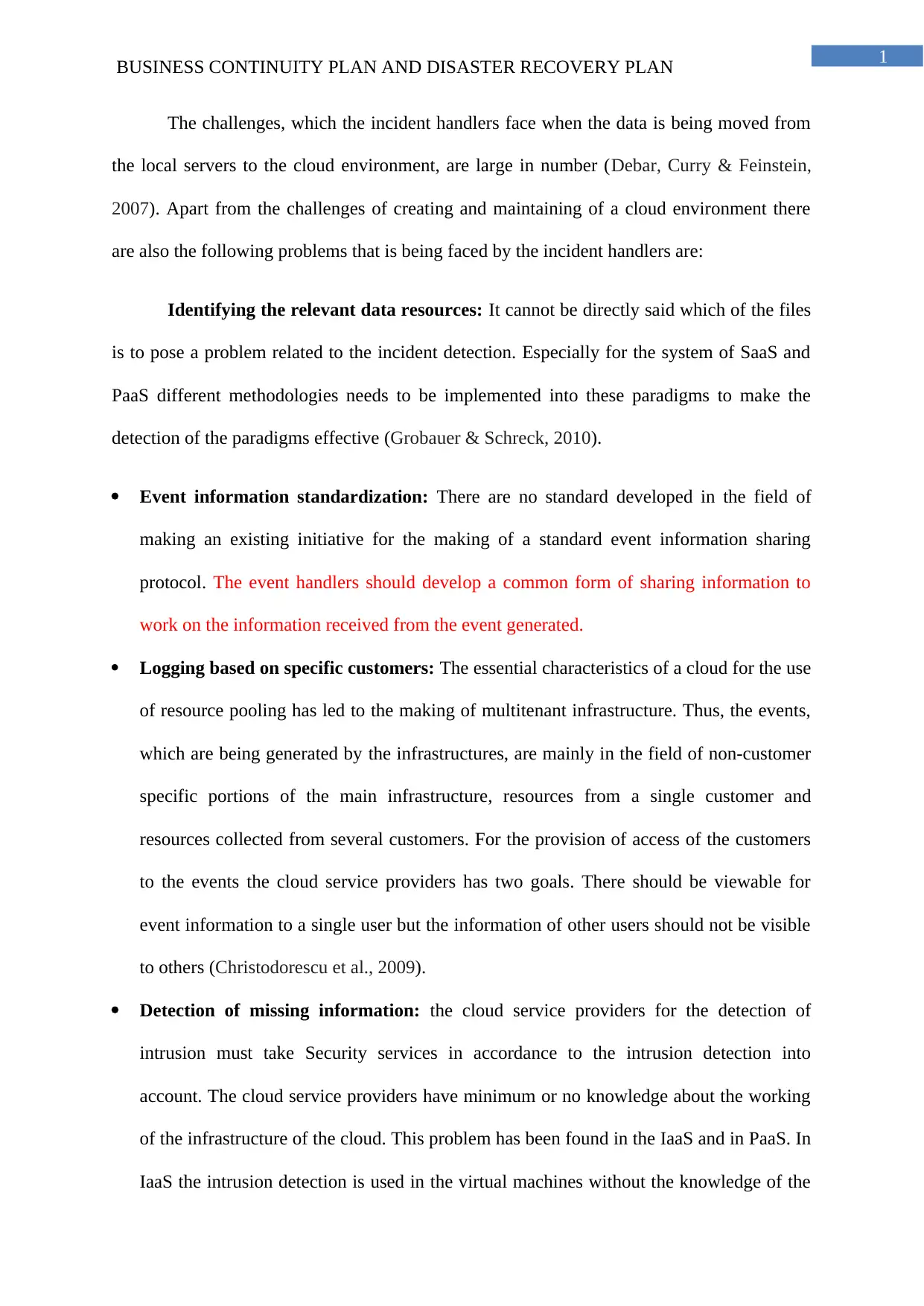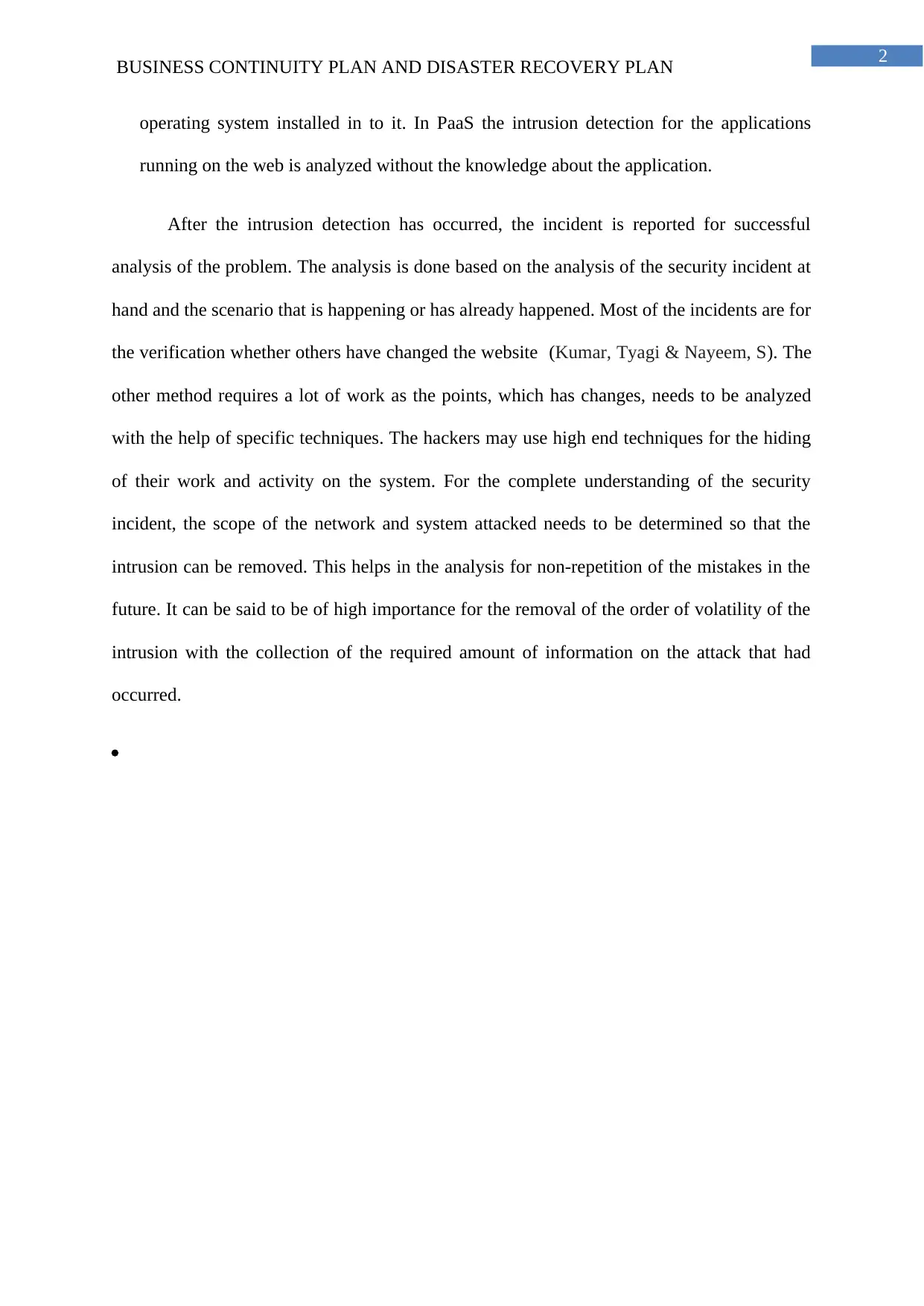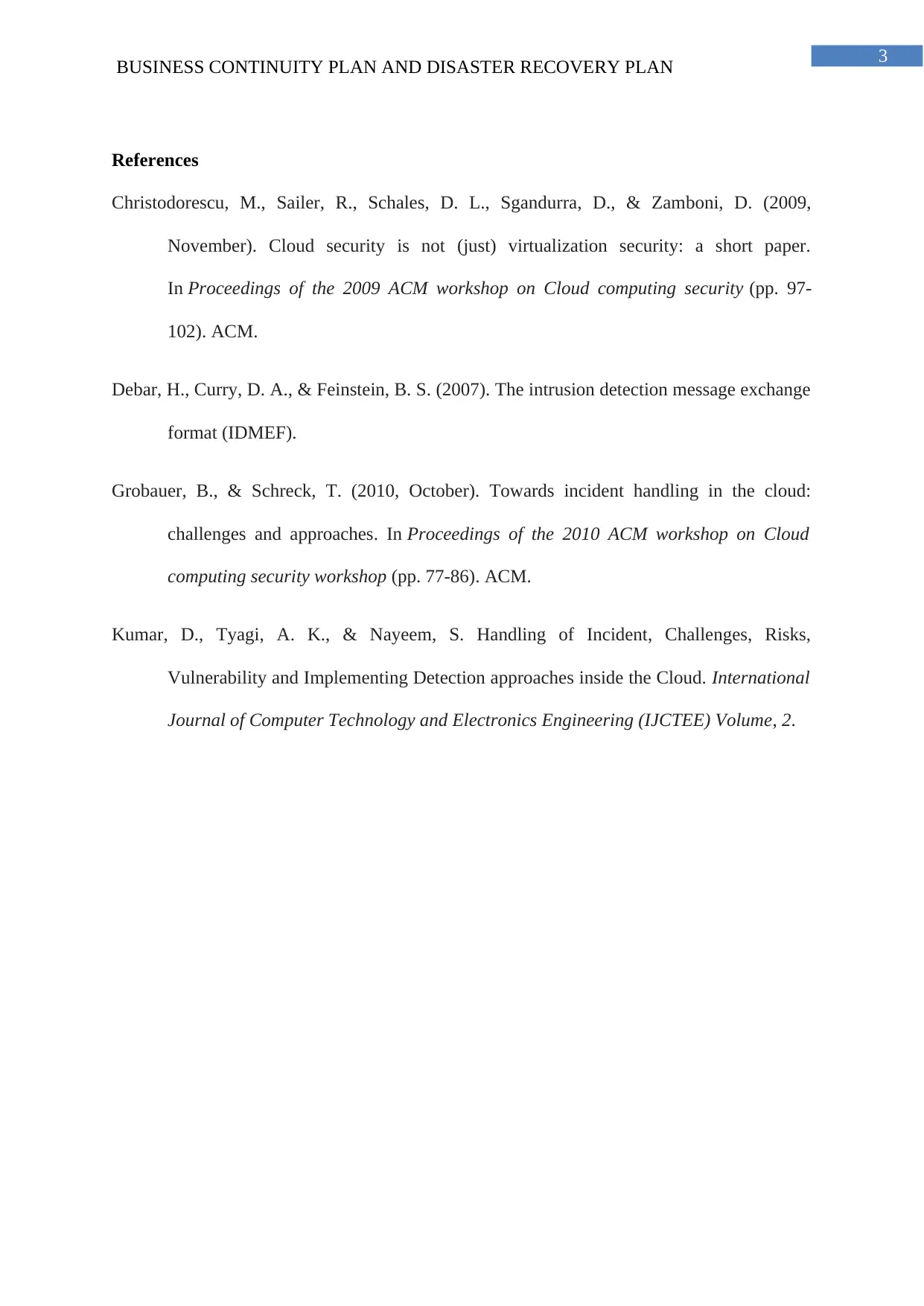Business Continuity Plan and Disaster Recovery Plan Analysis Report
VerifiedAdded on 2020/04/21
|4
|800
|187
Report
AI Summary
This report provides an analysis of a Business Continuity and Disaster Recovery Plan, focusing on the challenges faced by incident handlers when moving data to a cloud environment. It explores issues such as identifying relevant data resources, standardizing event information, and handling customer-specific logging in a multi-tenant infrastructure. The report also addresses the complexities of detecting missing information and intrusion within cloud environments, highlighting the importance of security services and intrusion detection methods. Furthermore, it emphasizes the need for thorough incident analysis, including the determination of the network and system scope affected by intrusions, and the collection of relevant information to prevent future occurrences. The references provided support the discussion with insights into cloud security, incident handling, and detection approaches.
1 out of 4










![[object Object]](/_next/static/media/star-bottom.7253800d.svg)